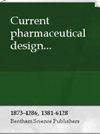Which Drugs are More Effective in Preventing Familial Adenomatous Polyposis Progression Based on Network Meta-Analysis?
IF 2.6
4区 医学
Q2 PHARMACOLOGY & PHARMACY
引用次数: 0
Abstract
Background: Familial adenomatous polyposis (FAP) is an inherited disorder. At present, an increasing number of medications are being employed to treat FAP; however, only a few have been assessed for their efficacy and safety. Therefore, this study aimed to conduct a network meta-analysis to compare the therapeutic outcomes and adverse drug reactions of all FAP-associated medications. Method: Six relevant databases were searched to identify pertinent randomized controlled trials (RCTs), and information on the dosage and frequency of various drugs was extracted. Additionally, data on changes in polyp counts and dimensions, as well as treatment-related adverse reactions for different medications were collected. The Bayesian method was employed to directly or indirectly compare the impact of different treatment regimens on changes in polyp numbers and diameters, and the safety of the drugs was investigated. Results: CXB at 16 mg/kg/day significantly reduced polyp numbers. Celecoxib at 8 mg/kg/day and sulindac (150 mg twice daily) plus erlotinib (75 mg/day) were effective for tolerant FAP patients. Additionally, EPAFFA 2 g daily and sulindac (150 mg twice daily) plus erlotinib (75 mg/day) emerged as the most effective for reducing polyp size. Conclusion: The most effective treatment for reducing the number of colorectal polyps is celecoxib 16 mg/kg/day. On the other hand, a daily dosage of 2 g EPA-FFA demonstrates the best results in terms of decreasing colorectal polyp diameter.基于网络 Meta 分析,哪些药物对预防家族性腺瘤性息肉病进展更有效?
背景:家族性腺瘤性息肉病(FAP)是一种遗传性疾病:家族性腺瘤性息肉病(FAP)是一种遗传性疾病。目前,治疗 FAP 的药物越来越多,但只有少数药物的疗效和安全性得到了评估。因此,本研究旨在进行网络荟萃分析,比较所有 FAP 相关药物的治疗效果和药物不良反应。方法:检索六个相关数据库以确定相关的随机对照试验(RCT),并提取各种药物的剂量和频率信息。此外,还收集了息肉数量和尺寸的变化数据,以及不同药物治疗相关的不良反应。采用贝叶斯法直接或间接比较了不同治疗方案对息肉数量和直径变化的影响,并调查了药物的安全性。研究结果16毫克/千克/天的CXB能显著减少息肉数量。8毫克/千克/天的塞来昔布和舒林酸(150毫克,每天两次)加厄洛替尼(75毫克/天)对耐受性好的FAP患者有效。此外,每天 2 克 EPAFFA 和舒林酸(150 毫克,每天两次)加厄洛替尼(75 毫克,每天一次)对减少息肉大小最有效。结论减少大肠息肉数量最有效的治疗方法是塞来昔布 16 毫克/千克/天。另一方面,每天服用 2 克 EPA-FFA 在减少大肠息肉直径方面效果最佳。
本文章由计算机程序翻译,如有差异,请以英文原文为准。
求助全文
约1分钟内获得全文
求助全文
来源期刊
CiteScore
6.30
自引率
0.00%
发文量
302
审稿时长
2 months
期刊介绍:
Current Pharmaceutical Design publishes timely in-depth reviews and research articles from leading pharmaceutical researchers in the field, covering all aspects of current research in rational drug design. Each issue is devoted to a single major therapeutic area guest edited by an acknowledged authority in the field.
Each thematic issue of Current Pharmaceutical Design covers all subject areas of major importance to modern drug design including: medicinal chemistry, pharmacology, drug targets and disease mechanism.

 求助内容:
求助内容: 应助结果提醒方式:
应助结果提醒方式:


